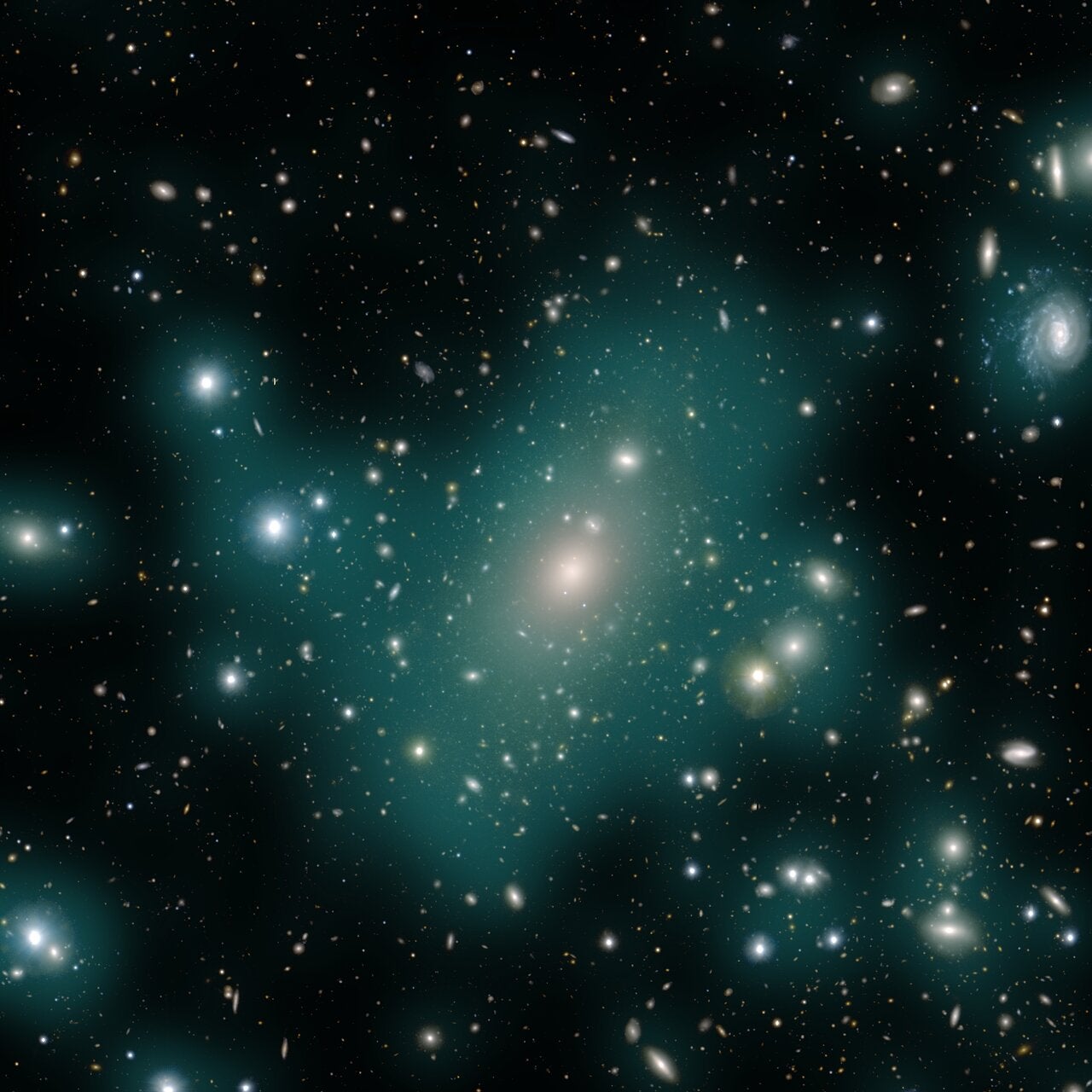With the new tech, researchers can gaze into the diffuse light and understand the large scale of the universe

The Abell 85 galaxy cluster surrounded with a hazy teal colored instracluster light. Credit: Astronomical Data/Image: M. Montes (Instituto de Astrofísica de Canarias); Artistic Enhancement: J. Pinto (Rubin Observatory).
The Vera C. Rubin Observatory will spot elusive intracluster light radiating from stars ripped away from their original galaxies when it goes online in 2025. Within the soft glow of the free-floating stars is evidence of the galaxies interacting and merging with each other over billions of years. By mapping the light, researchers can infer the history of a galaxy cluster’s formation and see — in a manner of speaking — the web of dark matter clumped around galaxies.
The Vera C. Rubin Observatory is expected to peer into this type of light with the world’s largest digital camera when it begins its decade long Legacy Survey of Space and Time in 2025.
“Stars stripped from their galaxies end up populating the space between galaxies in a cluster. These stars are like the dust released from a piece of chalk when you write on a blackboard,” said Mireia Montes, an astrophysicist at the Instituto de Astrofísica de Canarias, in a statement. “By tracking the stellar chalk dust with Rubin, we hope to be able to read the words on the galaxy cluster blackboard.”
Gathering intracluster light
Intracluster light is hard to see. It is about 1,000 times fainter than the darkest night skies perceivable with the eye. Most telescopes can’t pick it up. The ones that do usually can only capture the light if telescopes focus on one galaxy cluster for an extended stretch of time. The light forms after millions of years of galaxy collisions and mergers. Researchers suspect they may find clues about a galaxy cluster’s formation history within the faint light.
“There’s so much we don’t know about intracluster light,” says Montes. “The power of Rubin is that it’s going to provide us with lots of clusters of galaxies that we can explore.”
How will the Vera C. Rubin Observatory see intracluster light?
Researchers will use the millions of high-resolution images of distant galaxies taken by the Rubin Observatory to see the intracluster light. After the images are stacked, the team will see the largest long-exposure photos of the southern hemisphere sky and potentially reveal more if these lone stars are truly free-standing, how dark matter is distributed, and the universe’s structure.
“Intracluster light may look like something very small and insignificant, but it has a lot of implications,” Montes said. “It complements what we already know, and will open new windows into the history of our universe.”

